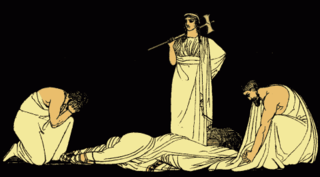Measure 11, also known as "One Strike You're Out", was a citizens' initiative passed in 1994 in the U.S. State of Oregon. This statutory enactment established mandatory minimum sentencing for several crimes. The measure was approved in the November 8, 1994 general election with 788,695 votes in favor, and 412,816 votes against.

The Youth Criminal Justice Act is a Canadian statute, which came into effect on April 1, 2003. It covers the prosecution of youths for criminal offences. The Act replaced the Young Offenders Act, which itself was a replacement for the Juvenile Delinquents Act.
In the United States, habitual offender laws were first implemented on March 7, 1994 and are part of the United States Justice Department's Anti-Violence Strategy. These laws require a person guilty of committing both a severe violent felony and two other previous convictions to serve a mandatory life sentence in prison. The purpose of the laws is to drastically increase the punishment of those convicted of more than two serious crimes.
Mandatory sentencing requires that offenders serve a predefined term for certain crimes, commonly serious and violent offenses. Judges are bound by law; these sentences are produced through the legislature, not the judicial system. They are instituted to expedite the sentencing process and limit the possibility of irregularity of outcomes due to judicial discretion. Mandatory sentences are typically given to people who are convicted of certain serious and/or violent crimes, and require a prison sentence. Mandatory sentencing laws vary across nations; they are more prevalent in common law jurisdictions because civil law jurisdictions usually prescribe minimum and maximum sentences for every type of crime in explicit laws.
A habitual offender, repeat offender, or career criminal is a person convicted of a new crime who was previously convicted of a crime(s). Various state and jurisdictions may have laws targeting habitual offenders, and specifically providing for enhanced or exemplary punishments or other sanctions. They are designed to counter criminal recidivism by physical incapacitation via imprisonment.

A juvenile court is a tribunal having special authority to pass judgements for crimes that are committed by children or adolescents who have not attained the age of majority. In most modern legal systems, children or teens who commit a crime are treated differently from legal adults that have committed the same offense.
In the common law legal system, an expungement proceeding is a type of lawsuit in which a first time offender of a prior criminal conviction seeks that the records of that earlier process be sealed, making the records unavailable through the state or Federal repositories. If successful, the records are said to be "expunged". Black's Law Dictionary defines "expungement of record" as the "Process by which record of criminal conviction is destroyed or sealed from the state or Federal repository." While expungement deals with an underlying criminal record, it is a civil action in which the subject is the petitioner or plaintiff asking a court to declare that the records be expunged.

California Proposition 36, the Substance Abuse and Crime Prevention Act of 2000, was an initiative statute that permanently changed state law to allow qualifying defendants convicted of non-violent drug possession offenses to receive a probationary sentence in lieu of incarceration. As a condition of probation defendants are required to participate in and complete a licensed and/or certified community drug treatment program. If the defendant fails to complete this program or violates any other term or condition of their probation, then probation can be revoked and the defendant may be required to serve an additional sentence which may include incarceration. The proposition was passed with 6,233,422 (60.86%) votes in favor and 4,009,508 (39.14%) against on November 7, 2000 and went into effect on July 1, 2001 with $120 million for treatment services allocated annually for five years. The act is codified in sections 1210 and 3063.1 of the California Penal Code and Division 10.8 of the California Health and Safety Code.

The Adam Walsh Child Protection and Safety Act is a federal statute that was signed into law by U.S. President George W. Bush on July 27, 2006. The Walsh Act organizes sex offenders into three tiers according to the crime committed, and mandates that Tier 3 offenders update their whereabouts every three months with lifetime registration requirements. Tier 2 offenders must update their whereabouts every six months with 25 years of registration, and Tier 1 offenders must update their whereabouts every year with 15 years of registration. Failure to register and update information is a felony under the law. States are required to publicly disclose information of Tier 2 and Tier 3 offenders, at minimum. It also contains civil commitment provisions for sexually dangerous people.
Juvenile law pertains to those who are deemed to be below the age of majority, which varies by country and culture. Usually, minors are treated differently under the law. However, even minors may be prosecuted as adults.

Hard labor still was the most common form of punishment in China in the 1980s. The penal system stressed reform rather than retribution, and it was expected that productive labor would reduce the penal institutions' cost to society. Even death sentences could be stayed by two-year reprieve. If a prisoner was judged to have reformed during that period, his or her sentence could be commuted to life or a fixed term at labor. The Prison Law of the People's Republic of China was enacted December 20, 1994. Since then the Chinese prison system has operated under supervision of the Bureau of Prison Administration which falls under the Ministry of Justice. All these divisions of government are controlled by the Chinese Communist Party. The head of the prison administration is Liu Zhenyu, his official title is Director-General. The prisons in the provinces are then further managed by local offices of justice. The Ministry of Justice states that it holds prisoners in over 700 establishments across the country. There are also thirty extra penitentiaries for juveniles. The corrections system in China has an official population of 1,649,804 inmates (mid-2015), including pre-trial detainees. The prison population rate is 118 per 100,000 people. Female offenders make up 6.5% of the total prison population and 0.4% of prisoners in China are of foreign nationality. In general, the prison population rate is going down in China. In 2008, the prison population rate in China peaked with a rate of 121. There was a plateau created in 2010 as the prison population rate remained the same. Some issues against human rights that prisoners experience are, “…executions without due process, illegal detentions at unofficial holding facilities known as “black jails,” torture and coerced confessions of prisoners…”. There is a laundry list of issues presented on the U.S State Department’s Humanities report for 2016. These include but are not limited to failure to protect refugees, extrajudicial disappearances of citizens, and discrimination against women and minorities.
In the United States, 1 in every 2,000 residents are imprisoned for life. This is similar to the total imprisonment rate in Japan, which is roughly 51 per 100,000 residents. There are many U.S. states in which a convict can be released on parole after a decade or more has passed, but in California, people sentenced to life imprisonment can normally apply for parole after seven years. The laws in the United States divide life sentences between "determinate life sentences" and "indeterminate life sentences." For example, sentences of "15 years to life," "25 years to life," or "life with mercy" may be given, which is called an "indeterminate life sentence." A sentence of "life without the possibility of parole" or "life without mercy" is called a "determinate life sentence" because a sentence of "15 years to life" means that it is a life sentence with a non-parole period of 15 years. Parole is not guaranteed but discretionary and so that is an indeterminate sentence. Even if a sentence specifically denies the possibility of parole, government officials may have the power to grant an amnesty, to reprieve, or to commute a sentence to time served.

California Proposition 6, also known as the Safe Neighborhoods Act and The Runner Initiative, is a statutory initiative that appeared on the November 2008 ballot in California. This proposition was rejected by voters on November 4 of that year.
Marsy's Law, the California Victims' Bill of Rights Act of 2008, enacted by voters as Proposition 33 through the initiative process in the November 2008 general election, is an Amendment to the state's constitution and certain penal code sections. The act protects and expands the legal rights of victims of crime to include 17 rights in the judicial process, including the right to legal standing, protection from the defendant, notification of all court proceedings, and restitution, as well as granting parole boards far greater powers to deny inmates parole. Passage of this law in California has led to the passage of similar laws in Florida, Georgia, Illinois, Kentucky, Nevada, North Carolina, Oklahoma, and Ohio, and efforts to pass similar laws in Hawaii, Iowa, Montana, Idaho, and South Dakota. In November 2017, Marsy's Law was found to be unconstitutional and void in its entirety by the Supreme Court of Montana for violating that State's procedure for amending the Montana Constitution.
Trial as an adult is a situation in which a juvenile offender is tried as if they were an adult.
In the United States, the law regarding murder varies by jurisdiction. In most U.S. jurisdictions there is a hierarchy of acts, known collectively as homicide, of which first degree murder and felony murder are the most serious, followed by second degree murder, followed by voluntary manslaughter and involuntary manslaughter which are not as serious, and ending finally in justifiable homicide, which is not a crime at all. However, because there are at least 52 relevant jurisdictions, each with its own criminal code, this is a considerable simplification.

Proposition 36, also titled A Change in the "Three Strikes Law" Initiative, was a California ballot measure that was passed in November 2012 to modify California’s Three Strikes Law. The latter law punishes habitual offenders by establishing sentence escalation for crimes that were classified as "strikes", and requires a mandatory minimum sentence of 25 to life for a "third-strike offense."

Proposition 47, also known by its ballot title Criminal Sentences. Misdemeanor Penalties. Initiative Statute, was a referendum passed by voters in the state of California on November 4, 2014. The measure was also referred to by its supporters as the Safe Neighborhoods and Schools Act. It recategorized some nonviolent offenses as misdemeanors, rather than felonies, as they had previously been categorized.

Criminal justice reform in the United States is aimed at fixing perceived errors in the criminal justice system. Goals of organizations spearheading the movement for criminal justice reform include decreasing the United States' prison population, reducing prison sentences that are perceived to be too harsh and long, altering drug sentencing policy, policing reform, reducing overcriminalization, and juvenile justice reform. Criminal justice reform also targets reforming policies for those with criminal convictions that are receiving other consequences from food assistance programs, outside of serving their time in prison.

Proposition 57 was a initiated California ballot proposition, approved on the November 8, 2016 ballot. The Proposition allows parole consideration for nonviolent felons, changes policies on juvenile prosecution, and authorizes sentence credits for rehabilitation, good behavior, and education.

















